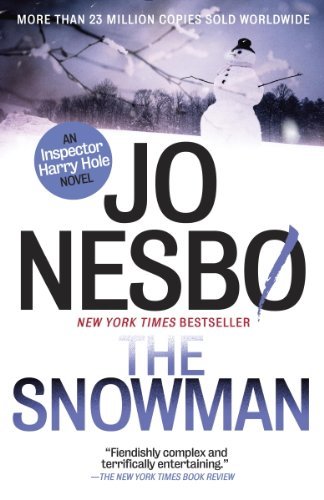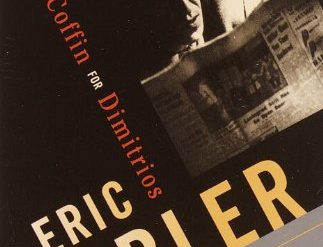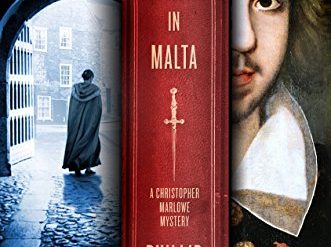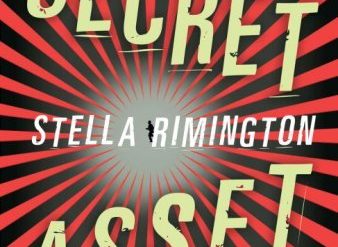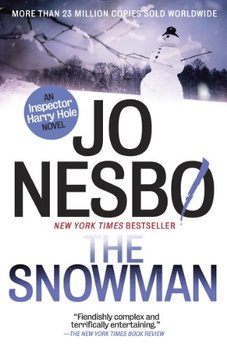
Nordic noir (or Scandinavian noir) is best known to the US reading public through the work of the late Swedish author Stieg Larsson. The trilogy posthumously launched in 2005 with the publication of The Girl With the Dragon Tattoo (titled Men Who Hate Women in the original Swedish) sold tens of millions of copies worldwide. But the three novels of The Girl trilogy comprise just one of many excellent Nordic noir series, representing a tradition established decades earlier. Millions of copies of those series have also been sold around the world. Below I’ve listed what I believe to be the best Nordic noir series. They’re listed in chronological order of publication of the first novel in each series. That date is followed by the country of origin and the name of the series’s protagonist.
Estimated reading time: 9 minutes
This post was updated on June 7, 2023.
How to find the best Nordic noir on this site
I’ve accompanied my description of each series with a link to my review of one of the novels in that series. You can find others by typing the name of the protagonist in the search box in the upper left-hand corner of the home page.
The genre also includes a number of notable standalone novels. The most prominent of these are Smilla’s Sense of Snow by Danish author Peter Høeg (1992) and The Crow Girl (2016) by the Swedish duo who write under the name Erik Axl Sund. In fact, The Crow Girl was published as a trilogy in the original Swedish edition. (My review of The Crow Girl is at Pedophiles, serial murder, and the Holocaust in a Swedish psychological thriller.)
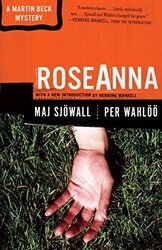
Maj Sjöwall and Per Wahlöö (1965) — Sweden: Martin Beck
Nordic noir is universally regarded as originating in the ten police procedurals Sjöwall and Wahlöö published from 1965 to 1975. The novels nominally center on the life and work of Stockholm police detective Martin Beck but frame him as one member of the homicide commission of the Swedish national police. Forty-eight films have been based on the books (most of them for television). The Swedish couple, both Leftists, laid out the whole series from the outset. Their purpose was to dramatize the economic and political challenges facing Swedish society, thus setting the tone for many of the Scandinavian noir series that followed in later years. My review of Roseanna, the excellent first novel in the series, is at Today’s Scandinavian detective fiction started here.

Henning Mankell (1991) — Sweden: Kurt Wallander
In nine novels, a novella, and a book of short stories, the late Henning Mankell explored the troubled life of Inspector Kurt Wallander in Ystad, a small medieval town on Sweden’s southern coast. Wallander is an alcoholic and prone to deep depression. The shocking murders he investigates bring to the surface the harsh social problems of contemporary Swedish society, especially the racism directed at African and Middle Eastern refugees.
Mankell divided his time between Sweden and Maputo, Mozambique, where he lived during half of each year as the artistic director of Teatro Avenida. He was an outspoken Left-Wing activist. Mankell was a prolific writer who produced a book of essays, eight children’s books, four original screenplays, and eighteen adult novels in addition to the Wallender series. You’ll find my review of The Troubled Man, the final volume in the Kurt Wallender series, at Farewell Kurt Wallender, we’re sad to see you go.
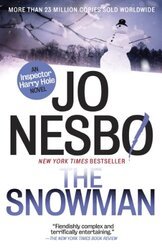
Jo Nesbø (1997) — Norway: Harry Hole
The bestselling author of Nordic Noir writing today is the Norwegian phenomenon, Jo Nesbø. A former economist and reporter, Nesbø is the vocalist and songwriter for a Norwegian rock band as well as the man behind Oslo detective Inspector Harry Hole. Between 1997 and 2018, Nesbø published eleven Harry Hole thrillers and twelve other novels (five of them for children). Harry Hole is an alcoholic and sometime drug addict who frequently collides with his superiors and colleagues. His investigations usually take place in Norway, but the novels also carry him to such far-flung locales as Australia, Hong Kong, and the Republic of the Congo. My review of The Snowman, the superb seventh entry in the series, is at Harry Hole investigates a two-decade-long string of serial murders.
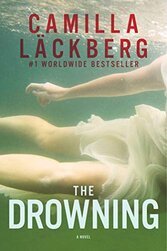
Camilla Läckberg (2003) — Sweden: Patrik Hedström and Erica Falck
Camilla Läckberg’s crime thrillers are set in her hometown, Fjällbacka, a small summer resort on Sweden’s west coast, not far from the Norwegian border to the north. The locale offers the opportunity of introducing a parade of new characters who don’t live there year-round, thus allowing Läckberg to avoid having to find an implausible number of culprits among the few hundred local people. Her books have been translated into at least forty languages in 60 countries; she is reputed to be the bestselling author writing in Swedish. Her stories center around the evolving relationship of detective Patrik Hedström and true-crime writer Erica Falck. I reviewed one of the Fjällbacka novels, The Drowning, at Another solid series of Scandinavian thrillers.
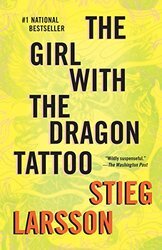
Stieg Larsson (2005) — Sweden: Lisbet Salander and Kalle Blomkvist
Upon his shocking death in 2004 at the age of fifty, Stieg Larsson left behind three novels in the Millennium Trilogy along with with notes indicating his plan to write seven additional books in the series. (My review of The Girl Who Played with Fire, the second novel in the series, is at Lisbeth Salander stars again in an engrossing murder mystery.) Legal disputes about the disposition of Larsson’s estate were tied up in Swedish courts for several years.
Eventually, in 2015, a fourth novel featuring Lisbet Salander and Kalle Blomkvist (The Girl in the Spider’s Web) appeared in 2015, written by Swedish crime writer David Lagercrantz. A fifth (The Girl Who Takes an Eye for an Eye) appeared in 2017, and a sixth (The Girl Who Lived Twice) in 2019. (I’ve reviewed all three of those novels as well. You’ll find them at More than 10 years after Stieg Larsson’s death, Lisbeth Salander returns!, Stieg Larsson’s “girl” is back: the Millennium series continues, and The new Lisbeth Salander novel involves Russia, Nepal, Sweden, and more, respectively.)
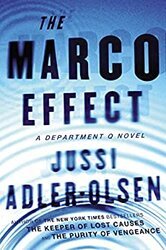
Jussi Adler-Olsen (2007) — Denmark: Department Q
Humor is rare in Nordic noir but it surfaces with some frequency in the Department Q series written by Jussi Adler-Olsen. Detective Inspector Carl Mørck is a virtual outcast in the Copenhagen police. He has a way of alienating almost everyone else on the force. To isolate him, his bosses have assigned him to the basement to run a new, cold-case unit called Department Q and dumped two misfits into his lap as his “assistants.” Both prove to be brilliant if unconventional detectives in their own right. Their interaction with Mørck is often very, very funny. But there’s nothing amusing about the gruesome serial murder cases that Department Q investigates. Check out my review of the chilling fifth book in the series, The Marco Effect, at Child soldiers, bank fraud, and eccentric police in a Danish thriller.
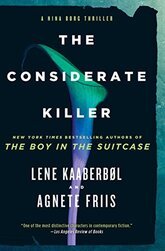
Lene Kaaberbøl and Agnete Friis (2008) — Denmark: Nina Borg
Most of the best Scandinavian noir series feature police investigators. Not so the four novels in the disappointingly short series centered on neurotic Danish Red Cross nurse Nina Borg. When I interviewed the coauthors at the Bay Area Book Festival in 2016, it appeared to me that the two women had little interest in continuing their collaboration. However, I hope I was wrong. Borg is one of the most compelling protagonists I’ve encountered in Nordic noir, and the crime investigations in which she becomes involved invariably bring to light a fascinating and complex backstory set far from Denmark. The series includes stories grounded in such countries as Hungary, Ukraine, and the Philippines. You’ll find my review of the sequel, Invisible Murder, at Murder most foul, Danish style. My review of The Considerate Killer, the fourth and (so far) final volume in the Nina Borg series, is at An outstanding Danish thriller.
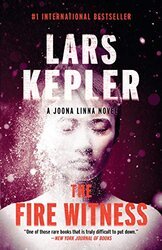
Lars Kepler (Alexander Ahndoril and Alexandra Coelho Ahndoril) (2009) — Sweden: Joona Linna
The latest sensation to join the pantheon of Scandinavian detective-heroes is Joona Linna by the husband-and-wife team of Alexander Ahndoril and Alexandra Coelho Ahndoril. The two were both successful writers individually before they set out to collaborate on this compelling series of detective novels, and they’ve stormed onto the literary scene not just in the Nordic countries but around the world with their complex and brilliant Finnish detective. As of this writing, they have published seven novels in the series. My review of the third, The Fire Witness, is at Nordic Noir at its best.
I’ve also read books by several other widely recognized authors of Scandinavian noir that did not move me to read their full series. Those included Sara Blaedel of Denmark (the Louise Rick series), Yrsa Sigurdardottir of Iceland (Thóra Gudmundsdóttir series), Arnaldur Indridason (Inspector Erlandur), Vidar Sundstøl (Minnesota Trilogy), and Jørgen Brekke (Odd Singsaker).
For related reading
I’ve reviewed one of the books in a newer series of Danish detective novels that is excellent: The Harbor (Kørner and Werner #3) by Katrine Engberg (A Nordic crime novel that’s not about a serial killer.
For an excellent book about this genre, see Scandinavian Noir: In Pursuit of a Mystery by Wendy Lesser (Down the rabbit hole of Nordic noir).
You might also enjoy my posts:
- Top 10 mystery and thriller series
- 20 excellent standalone mysteries and thrillers
- 20 outstanding detective series from around the world
- Top 20 suspenseful detective novels
- Top 10 historical mysteries and thrillers
And you can always find my most popular reviews, and the most recent ones, on the Home Page.

